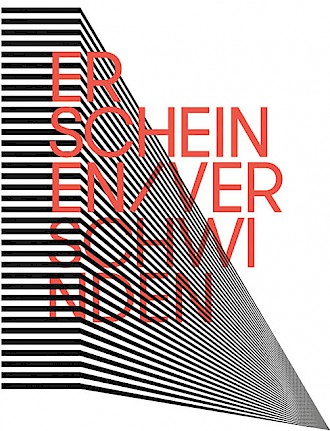
Annual Topic 2015/16
Alongside framing and sewing, further operations can be observed which are carried out with opening and closing and which are generative in nature. Each instance of opening or closing allows something to appear or disappear, emerge and recede; it can uncover something or cover it up, reveal or conceal. For example, the traditional stage or arena offers the opportunity to enter or leave the stage; this can be realized and motivated by the use of doors, backdrops, boundaries, curtains, cable hoists or trapdoors, but also by means of light, steps and other instruments. Dioramas, showcases and displays of all kinds, including digital presentation techniques and operations, make objects and people emerge and recede. Particularly important, in this context, are technical/magical practices, the illusionisms of the magic trick on stage and in film.
In art history terms, the window – as a medium of architecture and a metaphor of the image – has been enormously influential in this context. The disappearance of the image background in the vanishing point corresponds to the appearance of perspectival representation in the image space. The shift from the late Gothic image to central perspective, and the dissolution of central perspective in Impressionism and Cubism, can thus be conceived with the dialectic of transparency and opacity (Louis Marin), which corresponds to the dialectic of opening and closing. As implementations, however, these spatial operations are always already temporalized. Hence investigations will simultaneously be carried out into the media, and the specific gestures of appearing and disappearing, which give emphasis to the dramaturgy of a particular temporal event. One starting point might be techniques of beginning and ending, for example in opening and concluding rituals, in the use of the curtain in rituals designed to generate a sense of presence, such as the Byzantine prokypsis, or in institutionalized communication. In a broader sense, the discussion will also cover opening and closing (or concluding) figures in various medial/material rhetorics and (logical) practices of argument. For the techniques of narration, for example in literature and film, this has already been explored. Based on this, gestures that make things appear and disappear can be observed in historical and political contexts, for example, in processes of conflict and entry into war, as well as in the opening and concluding processions before and after games, or in the sequences of dishes and attractions at meals, festivals and celebrations. The emergence of styles and changes in style need to be studied, as do the rhetorics of innovation and modernization accompanying ever new waves of technology or popular aesthetics. Contrasting with this, however, instantaneous, extensionless and momentary forms of appearance and disappearance are also important, the sudden commotion, the detonation, the event without context. In terms of opening and closing, these things could be understood as the irruption of an exterior or the eruption of an interior, which can have a traumatic effect due to the lack of framing. They can also be traced, however, in the area of illusion-creation and of aesthetic experience, for example in the magic film since Méliès.
One last thing crucial for an understanding of the operations of appearing and disappearing is the intermediate states: operations which are incomplete, ambiguous, or not conceived with a view to termination, and which mediate, for example, between presence and absence (the ‘offstage’ in audiovisual media; misty images, liminal zones between background and figure, semi-transparent curtains, ghostly apparitions, diaphanous media and so on).